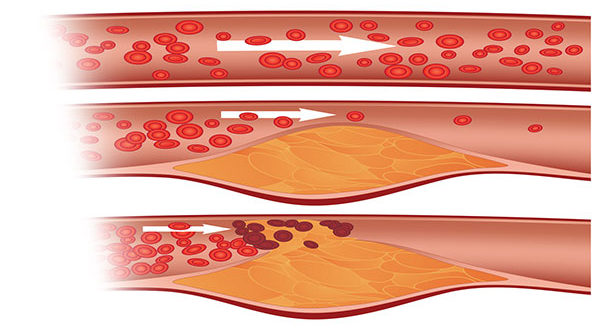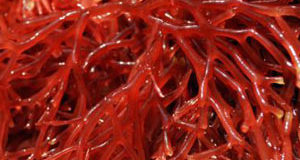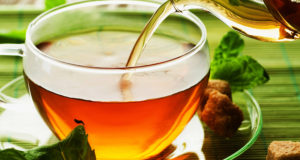-
1. Limit your intake of foods full of saturated fats, trans fats, and dietary cholesterol.
Foods with a lot of saturated fat include butter, fatty flesh like red meat, full-fat and low-fat dairy products, palm oil, and coconut oil. If you see partially hydrogenated fat in the Ingredient List of a food label, that food has trans fats. Top sources of dietary cholesterol include egg yolks, organ meats, and shellfish.
One type of fat – omega-3 fatty acids – has been shown to protect against heart disease. Good sources are cold-water fish like salmon, mackerel, halibut, trout, herring, and sardines.
To help you translate the above guidelines into daily food planning, here are key guidelines:
Select nonfat dairy foods only, 2 servings daily.
Limit your intake of meat, poultry, and fish to no more than 3.5 to 4 ounces per day. From the choices below, which are listed from best to poor, try to select almost always from the top.
Best Choice: Omega-3-rich fish, such as salmon, sardines, herring, mackerel, and trout. Choose at least 2 times weekly. If you’re using canned fish, such as canned sardines, select very-low-sodium or no-salt-added varieties.
Good Choice: Most other fish, plus shelled mollusks (clams, oysters, mussels, scallops).
Satisfactory Choices: Crustaceans (shrimp, crab, lobster, crawfish), Poultry (white meat, skinless) Game Meat (bison, venison, elk, ostrich), optimally free-range and grass-fed
Poor Choice: Red meat (beef, pork, lamb, veal, goat). For all red meat choices, select cuts that are under 30% fat.
Red meats are the least desirable choice because they not only tend to have the highest proportion of saturated fats, they are also higher in heme iron, which likely raises the risk of type 2 diabetes and colo-rectal cancer. Red meats also alter the gut’s microbiome, which recentresearch indicates may raise cardiovascular disease risk.
-
2. Eat a lot more fiber-rich foods (especially soluble fiber from foods like beans, oats, barley, fruits, and vegetables).
Foods naturally rich in soluble fiber have proven particularly good at lowering cholesterol. Excellent sources include oats, oat bran, barley, peas, yams, sweet potatoes and other potatoes, as well as legumes or beans, such as pinto beans, black beans, garbanzo beans, and peas. Vegetables rich in soluble fiber include carrots, Brussels sprouts, beets, okra, and eggplant. Good fruit sources are berries, passion fruit, oranges, pears, apricots, nectarines, and apples.
-
3. Choose protein-rich plant foods (such as legumes or beans, nuts, and seeds) over meat.
Common legumes include lentils, peas, and beans, such as pinto beans, red beans, white beans, and soybeans. They’re full of nutritional riches and are a very healthy, protein-packed alternative to meat. Legumes help lower total cholesterol, LDL cholesterol, blood sugar, and insulin levels, and may even lower cancer risk.
Nuts and seeds have been proven to modestly lower LDL cholesterol levels. To avoid blood-pressure-raising salt, choose raw or dry-roasted, unsalted varieties. To avoid gaining weight, don’t eat more than 1 ounce daily since nuts and seeds are dense with calories (averaging about 175 calories per ounce).

Guide for Lowering Cholesterol Naturally
The complete Pritikin Program for lowering cholesterol with little or no medication. Includes recipes and 5-day meal plan.
-
4. Lose as much excess weight as possible.
Losing excess weight is beneficial for all sorts of reasons, from improving your cholesterol profile to preventing diseases epidemic in industrialized societies, including type 2 diabetes, high blood pressure, heart attacks, strokes, gout, and many types of cancer.
Do keep in mind that it’s important to limit fat intake, even so-called “good” fats like olive oil, because any fat is dense with calories, which means heavy consumption can easily lead to a heavy body.
NOTE: The above steps contain the key food groups that have cholesterol-lowering properties. The supplements described in Tips 5 and 6 may provide additional LDL lowering.
-
5.Take plant sterol supplements.
Sterols are naturally occurring substances found in plants. A daily intake of 1 to 2 grams of plant sterols has been shown to lower LDL cholesterol levels. Your best choice is supplements, such as CholestOff (by Nature Made), because they do not have the calories, sugar, trans fats, and/or salt of many foods enriched with plant sterols.
-
6. Take psyllium (such as Metamucil).
Psyllium husks are seed grains sold as a soluble fiber supplement and laxative. Metamucil is the best known brand, but psyllium is also available in less expensive store brands. Studies have shown that 9 to 10 grams daily of psyllium, the equivalent of about 3 teaspoons daily of Sugar-Free Metamucil, reduced LDL levels.
To get the cholesterol-lowering benefit, take 1 teaspoon with water no more than 15 to 30 minutes before a meal.
 Vitamin Agent The Health & Naturalistic Source
Vitamin Agent The Health & Naturalistic Source





